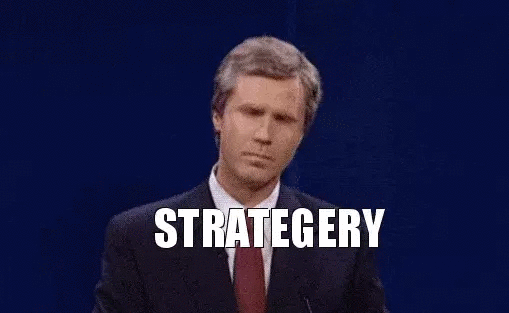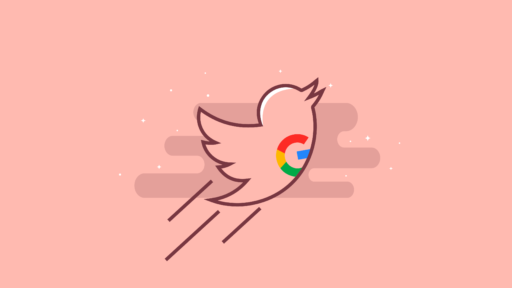Measuring ROI of your social media marketing strategy
In 2018, businesses were expected to spend 12% of their marketing budget on social media.
That’s a significant chunk of money that’s all going to waste unless we are measuring ROI.
Without measuring ROI, you won’t know if you’re getting your money’s worth out of your social campaigns. The problem, however, is that measuring ROI of your social media marketing strategy is tricky because there’s no single common denominator.
So how do you overcome this obstacle? Here are some tips that will help you get more out of your social media campaigns:
What makes a good social media ROI anyway?
This is a question you’ve probably already asked yourself a few times — what’s a good social ROI, and what’s a bad one?
True, there’s no one-size-fits-all number. The best thing to do is to compare yourself vs. the market. Doing so allows you to see how much your rivals are pumping into social media and what they’re getting out of it. Then, you can better understand how your own revenue is looking.
Moreover, when you compare your own efforts vs your rivals, you can jump on trends. If you keep a closer look at the revenue fluctuations in your sector, you can then adjust accordingly.
Social media ROI is all about how much bang you’re getting for your buck: the blood, sweat and tears (time, effort and resources) that you put into your social campaigns.
The problem is that, since we use social media ROI to work out the monetary return on our investments, measuring our results gets tricky because a retweet doesn’t come complete with a dollar sign. In order to measure our social media ROI, we have to get a bit creative.
Discover your KPIs
There are many KPIs you can track and we won’t list them all here. The ones you track need to align with your overall goals. However, there are 7 key performance indicators (KPIs) that all businesses should be tracking:
- Engagement — This includes clicks, likes, shares, comments and brand mentions. If you don’t track engagement, you won’t know how “switched on” your followers are.
- Reach — This metric shows how far — and how fast — your message is moving. If reach is down, you need to find ways to improve it. At Nightwatch, our reach increased by 1,412% over the course of a month, which for us represented a solid ROI compared to the amount of effort, time and resources we put in.
- Leads — Leads help you to understand your bottom line better. Back to that question: how much bang are you getting for your buck? At Nightwatch, we spent $35 on a Facebook ad campaign that ran for four days, and which resulted in 1,234 new page likes, and an increase in post engagements of 1,740%. As you can see, reach also increased, as did total video views.
- Customers — How many of your followers have actually converted into paying customers?
- Sales revenue — The ultimate aim of your business is to boost revenue, and you need to understand how your social campaigns are contributing to this goal.
- Budget — If you don’t keep an eye on this KPI, you could easily end up spending more than you planned, or even more than you can afford.
- Volume — How many people are talking about your brand? Moreover, when you know the times that people mention your brand the most, you can post content at those times to boost engagement.
Make sure your social goals tie in with your overall business goals
If you don’t break the bigger picture down into smaller goals, measuring your campaign is going to be tough.
As mentioned above, your goals will differ according to your KPIs. For example, if a company is looking to use social media to boost revenue, their social media goals will be free trials and product purchases.
If a business wants to use social media to raise awareness of their brand, on the other hand, they’ll be looking at impressions and followers, as well as brand mentions.
Whatever your overarching business goals are, they need to feed into and inform your social media goals.
Not just this, but in all cases you’ll need your customers to take an action that you can a) measure, and b) has monetary value. A simple goal could be to make a purchase, while another might be to fill out a form.
Assign a monetary value
The next thing you need to do is take a closer look at the monetary value of your goals.
For example, consider lifetime value. How much are you earning — on average — from each customer?
Consider average sale, too. How much is your average purchase?
It’s well worth tackling the monetary value of your goals because this will help you strategize better. If the lifetime value of your customer is $70 and 40% of your email list subscribers go onto making a purchase, you know that your email list is worth $28. Then, you can work out a strategy to get more out of it.
The money side of ROI is pretty important. As you can see from the screenshots we’ve shared from Nightwatch’s social campaigns, there are no actual dollars and cents signs.
But it’s only by tackling the money side of social ROI that we can see how much we’re getting out of what we put in.
You can choose from a variety of methods:
- Average sale – What’s the price of the average purchase via your site?
- Lifetime value – How much is the average customer worth to you?
- PPC costs – If you used the ads to achieve the exact same actions, what would you end up paying?
- Lifetime value x conversion rate – What’s the value to you of each potential visit?
Think Digital put these values together into a report:
The PPC cost is worth closer examination because you essentially pit how many $$$ you pay in advertising for a click, a follower or a page like and so on, against what you could earn via organic sharing.
As an example, if you pay $0.50 for each new Facebook follower, your organic gain of, say, 50 new followers could be worth around $25.
Dive into your marketing funnel
So far, we’ve taken a look at monetary profit. But while this is fairly easy to calculate, it’s a lot harder to measure your intangible results.
For example, is all your investment worth it for a few ebook downloads?
To learn more about how much cash you actually generated from an ebook download, you need to track your audience’s journey right through the marketing funnel.
To begin, monitor how and where people found your ebook. Adding Facebook pixels to your downloads landing page allows you to do this easily.
Then, open up your Google Analytics and add UTM parameters to your ebook. Make sure to add these as a hyperlink that takes people to your website where they can then purchase your products.
As such, you can now track your customers from the moment they downloaded your free ebook right up to the moment they make a purchase. In other words, you can track your conversions to better understand how effective your social media marketing strategy is.
Conclusion
When calculating your ROI, you need to take a look at your time, your tools and your advertising spend. Together, these will equal your investment.
All in all, measuring ROI of your marketing strategy is one thing, but the next step is to make continual improvements. Keep optimising your social media campaigns. Spend your money where you know you’ll get the most returns and take care of the seemingly little things, such as posting content at the right times. And if it makes more sense to grow your engagement organically rather than with paid ads? Do that.










